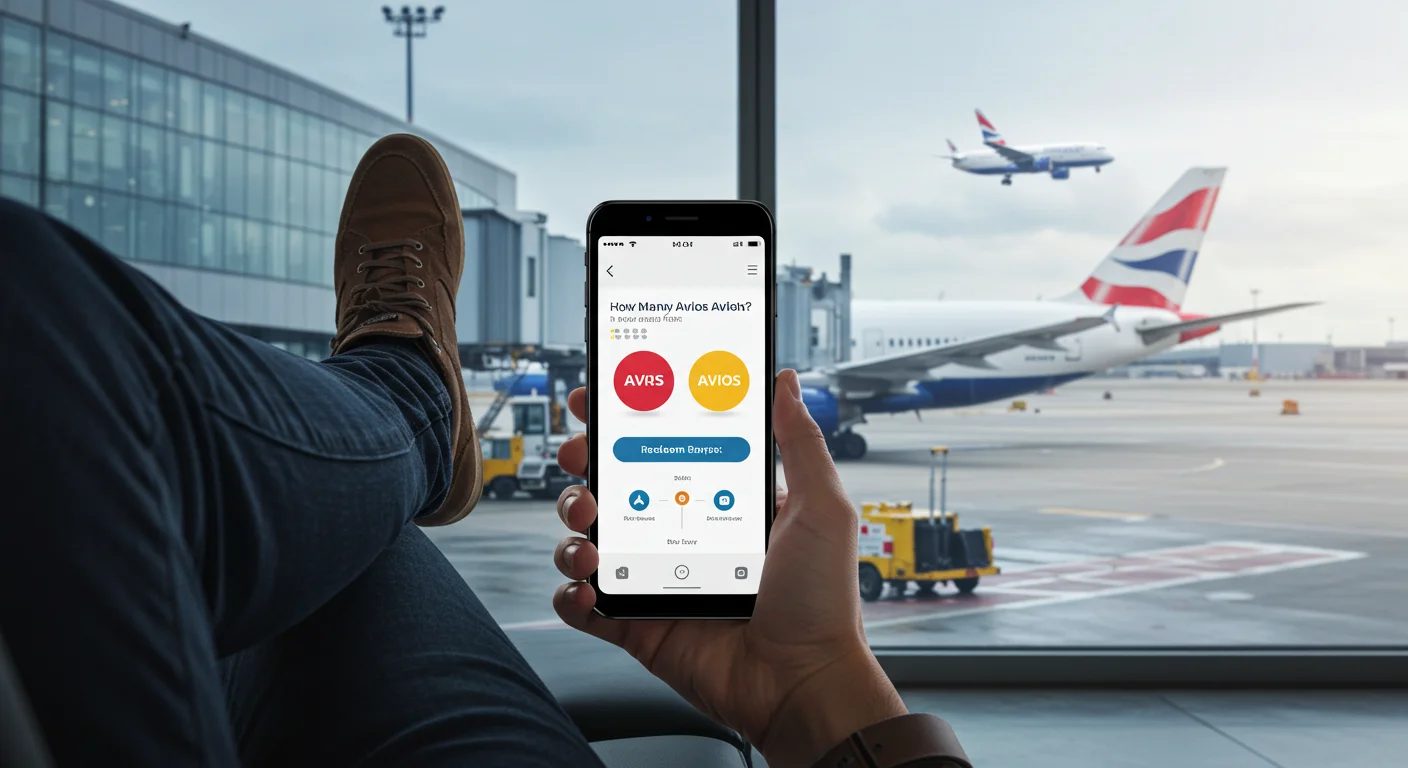Master Your European Journey with Smart Packing Strategies
Pack Smart for Your Europe Trip – Planning your dream Europe Trip can be incredibly exciting, but the thought of packing efficiently might feel overwhelming. Whether you’re embarking on a romantic getaway to Paris, exploring ancient ruins in Rome, or hiking through the Swiss Alps, having the right items in your suitcase can make or break your European adventure. This comprehensive guide will transform you from a chaotic over-packer into a strategic travel ninja, ensuring you’re perfectly prepared for whatever Europe throws your way.
The key to successful European travel lies not just in choosing the right destinations, but in packing smart. With varying climates, diverse cultural norms, and different activities across the continent, your packing strategy needs to be both versatile and efficient. Let’s dive into the essential items, insider tips, and proven strategies that will make your Europe Trip absolutely unforgettable.
✈️ 1. “Your Next Adventure Starts Here”
Don’t just dream it — live it.
Unlock exclusive deals on flights, hotels & tours before they’re gone.
👉 Book Your Escape Now »
Essential Clothing Items for European Travel
Base Layer Essentials
When building your European wardrobe, think layers, versatility, and comfort. Europe’s unpredictable weather patterns demand clothing that can adapt quickly to changing conditions.
Must-Have Base Items:
- Moisture-wicking underwear (pack 7-10 pairs for extended trips)
- Comfortable, supportive bras for women (2-3 pieces)
- Thermal underwear for winter travel or mountain regions
- Quality socks (wool or synthetic blend recommended)
- Lightweight sleepwear that doubles as lounge wear
The foundation of great travel clothing starts with quality undergarments. Merino wool or synthetic materials work exceptionally well because they’re naturally odor-resistant, allowing you to wear them multiple times between washes. This is particularly valuable when staying in hostels or small European hotels where laundry facilities might be limited.
Weather-Appropriate Outerwear
Europe’s climate varies dramatically from the Mediterranean warmth of southern Spain to the Arctic conditions of northern Scandinavia. Your outerwear selection should reflect both your specific destinations and the season of travel.
Seasonal Outerwear Guide:
Spring/Fall Travel:
- Waterproof rain jacket with hood
- Medium-weight fleece or wool sweater
- Light cardigan or zip-up hoodie
- Packable down vest for layering
Summer Essentials:
- Lightweight rain jacket (European summers can be surprisingly wet)
- Cotton or linen cardigan for air-conditioned spaces
- Sun hat with UPF protection
- Light scarf for conservative dress codes at religious sites
Winter Must-Haves:
- Heavy-duty winter coat rated for sub-zero temperatures
- Insulated gloves and warm hat
- Waterproof winter boots with good traction
- Thermal neck gaiter or warm scarf
Footwear Strategy for European Cobblestones
European cities are famous for their charming cobblestone streets, but these picturesque pathways can be brutal on inappropriate footwear. Your shoe selection can literally make or break your trip planner itinerary.
The Three-Shoe Rule:
- Primary walking shoes: Broken-in sneakers or hiking shoes with excellent support
- Dressier option: Comfortable flats, loafers, or low-heeled boots for restaurants and cultural sites
- Weather backup: Waterproof shoes or boots, depending on season
Avoid packing new shoes at all costs. European cities require extensive walking, often 10+ miles per day, and blisters from new footwear can quickly turn your dream vacation into a painful ordeal.
Technology and Electronics for Modern European Travel
Power and Connectivity Solutions
Europe uses different electrical outlets and voltage than North America, making proper adapters and converters essential for keeping your devices charged and functional.
Essential Electronics:
- Universal power adapter with USB ports
- Portable power bank (20,000+ mAh capacity recommended)
- Phone with international roaming or local SIM card capability
- Camera with extra batteries and memory cards
- Noise-canceling headphones for flights and train travel
Pro Tip: Many modern devices are dual voltage (110-240V), but always check your specific electronics before plugging them in. Hair dryers and styling tools are often the biggest culprits for voltage incompatibility.
Digital Travel Tools
Modern European travel is significantly enhanced by smartphone apps and digital tools that can serve as your personal trip planner, translator, and local guide all in one device.
Must-Download Apps:
- Google Translate (works offline with downloaded languages)
- Citymapper for public transportation in major cities
- XE Currency for real-time exchange rates
- TripAdvisor for restaurant and attraction reviews
- WhatsApp for communicating with European contacts
Documentation and Money Management
Critical Travel Documents
European travel requires specific documentation, and having backup copies can save your vacation if originals are lost or stolen.
Document Checklist:
- Valid passport (must be valid for at least 6 months beyond travel dates)
- Travel insurance documents
- Flight confirmations and hotel reservations
- International driving permit (if planning to rent a car)
- Emergency contact information
- Copies of all documents stored separately and digitally
Security Strategy: Store document copies in three places: physical copies in your luggage, digital copies in cloud storage, and photos on your smartphone. This triple-backup system ensures you’re never completely stranded if one source fails.
Money and Payment Methods
Europe’s diverse currency landscape requires strategic financial planning. While many countries use the Euro, several popular destinations (UK, Switzerland, Czech Republic, Poland) maintain their own currencies.
Financial Preparation:
- Notify your bank of travel plans to avoid card blocks
- Carry multiple payment methods (2 credit cards, 1 debit card)
- Small amount of cash in local currency for immediate needs
- Money belt or hidden wallet for security
- Understanding of foreign transaction fees
Research shows that travelers who diversify their payment methods experience 40% fewer financial disruptions during their trips, according to recent studies by the European Travel Commission.
Personal Care and Health Essentials
Medication and Health Supplies
European pharmacies are generally excellent, but prescription medications and specific health needs require advance planning.
Health Kit Essentials:
- Prescription medications in original containers with extra supplies
- Basic first aid supplies (bandages, antiseptic, pain relievers)
- Motion sickness remedies for trains, boats, and winding mountain roads
- Sunscreen with high SPF rating
- Personal hygiene items for the first few days
Medical Considerations: European healthcare is typically high quality, but travel insurance is essential for non-EU citizens. Some countries require specific vaccinations or health documentation, particularly for travelers coming from certain regions.
Toiletries and Personal Care
European hotels and accommodations vary widely in their amenity offerings, making personal care items a crucial packing consideration.
Toiletry Strategy:
- Focus on multi-purpose products to save space
- Pack travel-sized versions of essential items
- Research local availability of preferred brands
- Consider solid toiletries to avoid liquid restrictions
- Include a small sewing kit for clothing repairs
Special Considerations for Different European Regions
Mediterranean Europe (Spain, Italy, Greece, Southern France)
The Mediterranean region offers warm summers, mild winters, and a relaxed cultural atmosphere that influences packing decisions.
Regional Packing Priorities:
- Lightweight, breathable fabrics
- Conservative clothing for religious sites
- Strong sunscreen and sun protection
- Comfortable sandals and lightweight shoes
- Swimwear and beach accessories
Mediterranean Europe experiences intense summer heat, with temperatures often exceeding 35°C (95°F). Pack clothing that allows your skin to breathe while remaining culturally appropriate.
Northern Europe (Scandinavia, Northern Germany, Baltic States)
Northern European countries offer stunning natural beauty but require preparation for cooler temperatures and rapidly changing weather conditions.
Cold Weather Essentials:
- Insulated, waterproof outerwear
- Warm layers that can be easily added or removed
- Waterproof footwear with good traction
- Warm accessories (hats, gloves, scarves)
- Moisturizer for dry, cold air
Central Europe (Austria, Czech Republic, Hungary, Switzerland)
Central Europe combines urban sophistication with outdoor adventure opportunities, requiring versatile packing that transitions from city exploration to mountain activities.
Versatility Focus:
- Clothing suitable for both cities and nature
- Layers for varying elevations and microclimates
- Comfortable walking shoes and hiking footwear
- Weather-protective gear for mountain regions
- Cultural dress codes for classical music venues and upscale restaurants
Packing Strategies and Space Optimization
The Art of Efficient Packing
Successful European travel often involves multiple destinations, various transportation methods, and weight restrictions that make efficient packing crucial.
Space-Saving Techniques:
- Roll clothing instead of folding
- Use packing cubes to organize and compress items
- Wear heaviest items (boots, coats) while traveling
- Pack clothing that can be mixed and matched
- Choose versatile pieces that serve multiple functions
The 5-4-3-2-1 Packing Rule:
- 5 sets of underwear and socks
- 4 tops that can be mixed and matched
- 3 bottoms (pants, skirts, or shorts)
- 2 pairs of shoes
- 1 jacket or outerwear piece
This formula provides variety while maintaining reasonable luggage weight and size restrictions.
Luggage Selection Strategy
Your luggage choice significantly impacts your travel experience, particularly in Europe where you’ll encounter stairs, cobblestones, and various transportation methods.
Luggage Considerations:
- Hard-sided suitcases offer better protection but add weight
- Soft-sided bags are lighter and more flexible for tight spaces
- Four-wheel spinners work better on smooth surfaces
- Two-wheel bags perform better on rough terrain
- Consider a hybrid approach with different bags for different trip segments
Cultural Sensitivity and Local Customs
Dress Codes and Cultural Expectations
European countries maintain diverse cultural norms regarding appropriate dress, particularly in religious sites, upscale establishments, and business districts.
Cultural Dress Guidelines:
- Research specific dress codes for planned activities
- Pack conservative clothing for religious site visits
- Include slightly formal options for dinners and cultural events
- Understand regional variations in casual dress standards
- Consider seasonal cultural events that might require specific attire
Many European churches and religious sites strictly enforce dress codes, requiring covered shoulders, long pants, and closed-toe shoes. Having appropriate clothing readily available prevents disappointing exclusions from must-see cultural sites.
Language and Communication Preparation
While English is widely spoken in tourist areas, basic local language skills and cultural awareness enhance your travel experience significantly.
Communication Tools:
- Learn basic phrases in local languages
- Understand cultural greeting customs
- Research tipping customs and practices
- Familiarize yourself with local business hours and customs
- Download offline translation apps for emergencies
According to UNESCO’s linguistic diversity research, Europe hosts over 200 languages across its various countries, making basic language preparation particularly valuable for authentic cultural experiences.
Budget-Friendly Packing Tips
Maximizing Value While Minimizing Costs
European travel can be expensive, but strategic packing choices can significantly reduce on-the-road expenses and enhance your overall experience.
Cost-Saving Packing Strategies:
- Pack versatile clothing to avoid shopping for specific items
- Include basic medical supplies to avoid expensive pharmacy visits
- Bring reusable water bottles and coffee cups
- Pack snacks for long travel days and expensive tourist areas
- Include laundry supplies for extended trips
Smart Shopping Preparation:
- Research local prices for items you might need
- Identify items that are cheaper to buy in Europe vs. pack from home
- Consider shipping strategies for souvenirs and purchases
- Understand customs regulations for bringing items home
Safety and Security Considerations
Protecting Your Belongings and Personal Safety
European cities are generally safe, but tourist areas attract pickpockets and scam artists who specifically target unprepared travelers.
Security Packing Essentials:
- Money belt or hidden wallet for important documents and cash
- TSA-approved locks for luggage
- Backup credit cards stored separately from primary cards
- Emergency contact information in multiple locations
- Copies of important documents
Anti-Theft Strategies:
- Avoid displaying expensive jewelry or electronics
- Use bags with zippers and keep them closed
- Consider anti-theft bags with hidden zippers and RFID blocking
- Pack items you can afford to lose in easily accessible pockets
- Keep irreplaceable items (medications, documents) in carry-on luggage
Emergency Preparedness
While nobody wants to think about emergencies during vacation planning, being prepared for unexpected situations can save your Europe Trip from disaster.
Emergency Kit:
- Basic first aid supplies
- Emergency cash in multiple currencies
- Emergency contact information for embassies
- Travel insurance documentation
- Backup charging cables and power adapters
Seasonal Packing Variations
Spring Travel (March-May)
European spring offers mild weather, blooming flowers, and fewer crowds, but also unpredictable weather patterns that require flexible packing strategies.
Spring Packing Priorities:
- Layered clothing for temperature variations
- Waterproof jacket for spring showers
- Comfortable walking shoes for increased outdoor activities
- Allergy medication for sensitive travelers
- Light sweaters for cool evenings
Spring in Europe can vary dramatically, with Mediterranean regions experiencing warm, sunny days while Northern Europe might still have snow. Research specific regional weather patterns for your planned destinations.
Summer Travel (June-August)
European summers offer long daylight hours, warm weather, and peak tourist season energy, but also crowds, higher prices, and intense heat in southern regions.
Summer Essentials:
- Lightweight, breathable clothing
- Sun protection (hat, sunscreen, sunglasses)
- Comfortable sandals and breathable shoes
- Swimwear and beach accessories
- Insect repellent for outdoor activities
Heat Management Strategy:
- Choose light-colored clothing to reflect heat
- Pack moisture-wicking fabrics for active days
- Include electrolyte supplements for hot weather activities
- Research air conditioning availability in accommodations
- Plan indoor activities during peak heat hours
Fall Travel (September-November)
European fall provides comfortable temperatures, beautiful autumn colors, and harvest season culinary experiences, but also increased rainfall and shorter daylight hours.
Fall Packing Considerations:
- Warm layers for cooling temperatures
- Waterproof outerwear for increased precipitation
- Comfortable shoes with good traction for wet leaves
- Camera equipment for stunning autumn photography
- Warmer sleepwear as accommodations reduce heating
Winter Travel (December-February)
European winters offer Christmas markets, winter sports, and cozy indoor cultural experiences, but also challenging weather conditions and shorter daylight hours.
Winter Survival Kit:
- Heavy-duty winter coat and warm layers
- Waterproof, insulated footwear
- Warm accessories (gloves, hat, scarf)
- Moisturizer and lip balm for dry air
- Hand and foot warmers for extreme cold
Winter Activity Preparation:
- Research specific gear requirements for planned winter activities
- Consider renting specialized equipment (ski gear, winter sports equipment)
- Pack extra batteries for electronics (cold weather drains batteries faster)
- Include warm, comfortable indoor clothing for cozy evenings
Transportation-Specific Packing
Air Travel Considerations
European air travel involves specific regulations, potential connections, and varying airline policies that influence packing decisions.
Flight Packing Strategy:
- Research airline baggage policies and weight restrictions
- Pack essentials in carry-on luggage
- Consider potential delays and pack accordingly
- Include entertainment for long flights
- Pack compression socks and comfortable travel clothing
Carry-On Essentials:
- Change of clothes in case checked luggage is delayed
- Essential medications and toiletries
- Electronics and chargers
- Important documents and copies
- Valuable items that shouldn’t be checked
Train Travel Optimization
European train systems are extensive and efficient, but require specific packing considerations for comfort and convenience.
Train Travel Packing:
- Luggage that’s easy to maneuver in narrow aisles
- Entertainment for long journeys
- Snacks and water for routes without dining cars
- Comfortable clothing for extended sitting
- Power adapters for charging during travel
European train systems connect virtually every major destination, making rail travel an excellent option for multi-city trip planner itineraries. High-speed trains like the TGV, ICE, and AVE can transport you between major cities faster than flying when you account for airport security and transfer times.
Car Rental and Road Trip Packing
Renting a car in Europe provides incredible freedom to explore rural areas, small towns, and scenic routes not accessible by public transportation.
Road Trip Essentials:
- International Driving Permit (required in most European countries)
- GPS navigation device or smartphone with offline maps
- Emergency roadside kit
- Comfortable driving clothes and shoes
- Snacks and water for remote areas
Navigation and Safety:
- Research local driving laws and customs
- Understand parking regulations in cities
- Consider toll road costs and payment methods
- Pack physical maps as backup to GPS
- Include emergency contact information for rental car company
Special Interest Packing
Business Travel in Europe
European business culture varies significantly between countries, requiring careful attention to professional dress codes and cultural expectations.
Business Travel Essentials:
- Professional attire appropriate for specific countries
- Quality leather goods (briefcase, shoes, belt)
- Reliable laptop and business accessories
- Business cards with contact information
- Cultural research on business etiquette
Professional Appearance Standards:
- Northern European countries prefer conservative, high-quality clothing
- Mediterranean countries may allow slightly more relaxed business casual
- Eastern European countries often maintain formal dress expectations
- Research specific industry standards for your meetings
- Consider cultural gift-giving customs for business relationships
Adventure and Outdoor Activities
Europe offers incredible outdoor opportunities, from Alpine hiking to coastal kayaking, requiring specialized gear and preparation.
Outdoor Activity Gear:
- Weather-appropriate hiking clothing and footwear
- Safety equipment for planned activities
- First aid supplies for remote areas
- Navigation tools and emergency communication devices
- Activity-specific gear (climbing equipment, water sports gear)
Research and Preparation:
- Investigate local guide services and equipment rental options
- Understand weather patterns and seasonal restrictions
- Research permit requirements for certain activities
- Consider travel insurance that covers adventure activities
- Pack emergency supplies for wilderness areas
Frequently Asked Questions
What should I absolutely never forget when packing for Europe?
The most critical items are your passport (valid for at least 6 months), travel insurance documentation, essential medications, and a universal power adapter. These items cannot be easily replaced if forgotten and can seriously disrupt your Europe Trip if missing.
How much should I pack for a two-week European vacation?
Follow the one-week packing rule: pack for one week and plan to do laundry during your trip. This approach keeps luggage manageable while ensuring you have everything needed. Focus on versatile pieces that can be mixed, matched, and layered.
Is it better to pack light or bring everything I might need?
Pack light, especially if you’re planning to move between multiple destinations. European cities involve significant walking, public transportation, and stairs. Heavy luggage quickly becomes a burden that limits your mobility and enjoyment.
What clothing items work best for European travel?
Merino wool and synthetic blends are ideal because they’re odor-resistant, quick-drying, and temperature-regulating. Neutral colors (black, navy, gray, beige) mix and match easily and hide stains better than light colors.
Should I pack formal clothing for Europe?
Include one slightly dressy outfit for nice restaurants, classical concerts, or upscale cultural events. Many European establishments maintain higher dress standards than casual American venues, and being appropriately dressed enhances your experience.
How do I handle different electrical outlets across European countries?
A universal adapter with multiple plug types covers all European outlets. Most modern electronics (phones, laptops, cameras) are dual voltage, but always check hair dryers and styling tools, which often require voltage converters.
What’s the biggest packing mistake American travelers make in Europe?
Over-packing shoes is the most common mistake. European cities require extensive walking on varied surfaces, but many travelers pack fashion over function. Focus on comfort and versatility over style variety.
Is European weather really that unpredictable?
Yes, European weather can change rapidly, especially in spring and fall. Mountain regions, coastal areas, and northern countries experience particularly variable conditions. Always pack layers and waterproof options regardless of season.
Conclusion: Master Your European Adventure Through Smart Packing
Successful European travel begins long before you board your first flight – it starts with strategic packing that anticipates the diverse experiences, weather conditions, and cultural expectations you’ll encounter across this magnificent continent. By following the comprehensive strategies outlined in this guide, you’ll transform from an anxious over-packer into a confident travel expert who’s prepared for anything Europe offers.
Remember, the best trip planner advice emphasizes flexibility and preparation. Your packing choices should enable spontaneous adventures while ensuring comfort and safety throughout your journey. Focus on quality, versatile items that serve multiple purposes, and don’t hesitate to invest in good luggage, comfortable shoes, and weather-appropriate clothing – these investments pay dividends in comfort and enjoyment throughout your travels.
The memories you’ll create exploring European cobblestone streets, sampling local cuisines, and immersing yourself in centuries of history will last a lifetime. Don’t let poor packing choices diminish these incredible experiences. Take time to plan, pack strategically, and prepare for the adventure of a lifetime.
Ready to start planning your perfect European adventure? Research your specific destinations, create a detailed packing checklist based on your planned activities, and start gathering the essential items mentioned in this guide. Your future self will thank you when you’re confidently navigating European streets with everything you need and nothing you don’t.
Share your own European packing tips and experiences in the comments below – seasoned travelers love learning from each other’s successes and mistakes. Safe travels, and enjoy every moment of your European journey!







